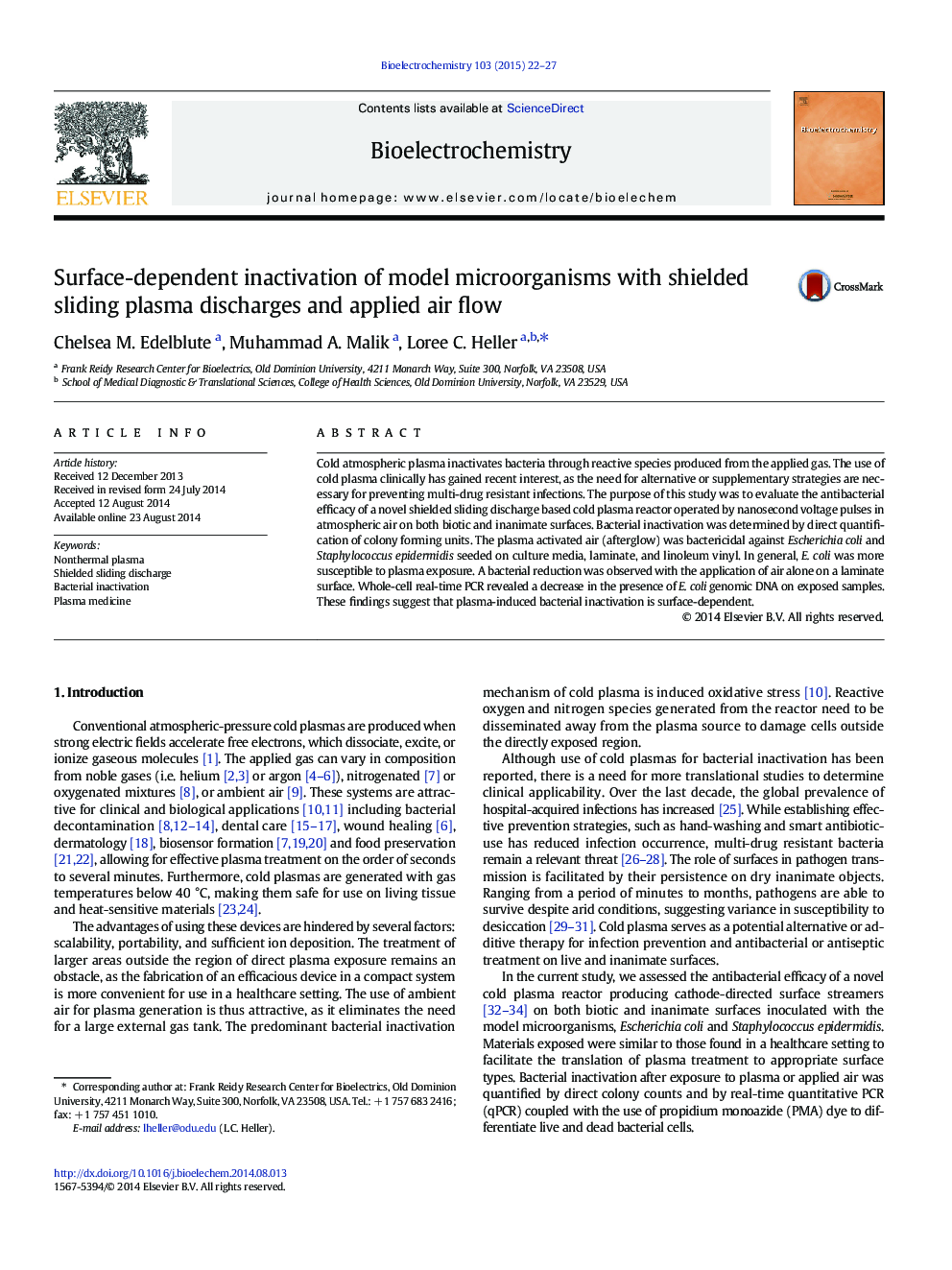| Article ID | Journal | Published Year | Pages | File Type |
|---|---|---|---|---|
| 1267896 | Bioelectrochemistry | 2015 | 6 Pages |
•Demonstrated antibacterial efficacy of a novel shielded sliding discharge plasma.•Demonstrated surface-dependence of inactivation on clinically relevant surfaces.•Quantified bacterial inactivation by gas flow alone on specific surfaces.
Cold atmospheric plasma inactivates bacteria through reactive species produced from the applied gas. The use of cold plasma clinically has gained recent interest, as the need for alternative or supplementary strategies are necessary for preventing multi-drug resistant infections. The purpose of this study was to evaluate the antibacterial efficacy of a novel shielded sliding discharge based cold plasma reactor operated by nanosecond voltage pulses in atmospheric air on both biotic and inanimate surfaces. Bacterial inactivation was determined by direct quantification of colony forming units. The plasma activated air (afterglow) was bactericidal against Escherichia coli and Staphylococcus epidermidis seeded on culture media, laminate, and linoleum vinyl. In general, E. coli was more susceptible to plasma exposure. A bacterial reduction was observed with the application of air alone on a laminate surface. Whole-cell real-time PCR revealed a decrease in the presence of E. coli genomic DNA on exposed samples. These findings suggest that plasma-induced bacterial inactivation is surface-dependent.
